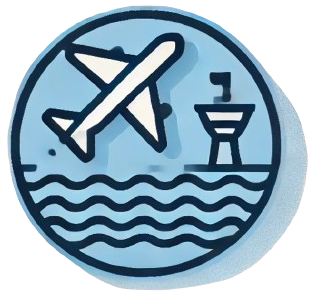When boarding a Boeing 737-800
Many passengers often ponder the safety of their chosen seat. While air travel is statistically one of the safest modes of transport, the layout of an aircraft can influence survival outcomes in the rare case of an accident. Research and expert opinions indicate certain areas of the plane might offer greater protection than others, particularly in regard to seating position.
Positioning Matters: The Safest Seats Revealed
According to John Hansman, a professor of aeronautics and astronautics at MIT, the rear seats of a Boeing 737-800 are generally considered the safest. This conclusion is based on various studies which indicate that if an accident occurs, the back of the aircraft tends to sustain less damage. Interestingly, Hansman also notes that the front of the airplane may serve as a shock absorber, potentially reducing the severity of impact for those seated behind the front section. Therefore, those opting for seats toward the rear of the cabin may have a marginally better chance of survival than those seated at the front.
Safer Seating Positions:
- Rear seats (generally safer)
- Front seats (shock absorber effect)
Understanding the Most Unsafe Seats
Conversely, studies have identified certain seats as less safe. A study conducted by TIME in 2015 highlighted that the middle seats in the back of the aircraft had the lowest fatality rates, offering some reassurance to those sitting in that section. In stark contrast, it was found that the aisle seats in the middle third of the cabin posed the greatest risk, making them the least desirable choice for safety-conscious travelers. When choosing a seat in an aircraft, being aware of these insights can assist passengers in making informed decisions about where to sit.
Unsafe Seating Positions:
- Middle seats in the back (lower fatality rates)
- Aisle seats in the middle third (higher risk)
Assessing Overall Safety of the Boeing 737-800
As a model, the Boeing 737-800 boasts a strong safety record since its inception in 1997. Nevertheless, like many aircraft, it has experienced its share of incidents, some of which have resulted in fatalities. The Aviation Safety Network has documented the history of such occurrences, providing evidence that no aircraft can be considered entirely free from risk. However, its overall safety statistics remain favorable, indicating that flying on a 737-800 is relatively safe compared to other forms of transportation.
| Aspect | Details |
|---|---|
| Inception Date | 1997 |
| Overall Safety Record | Strong |
| Incidents Documented | Yes |
| Comparison to Other Transport | Favorable (relatively safe) |
In conclusion, while seat selection can influence safety outcomes, the Boeing 737-800 is designed with multiple safety features that protect passengers. By opting for a seat in the rear of the cabin and avoiding the middle aisle seats, travelers can enhance their odds of a safer journey. Ultimately, understanding these dynamics can lead to a more confident and informed flying experience.
